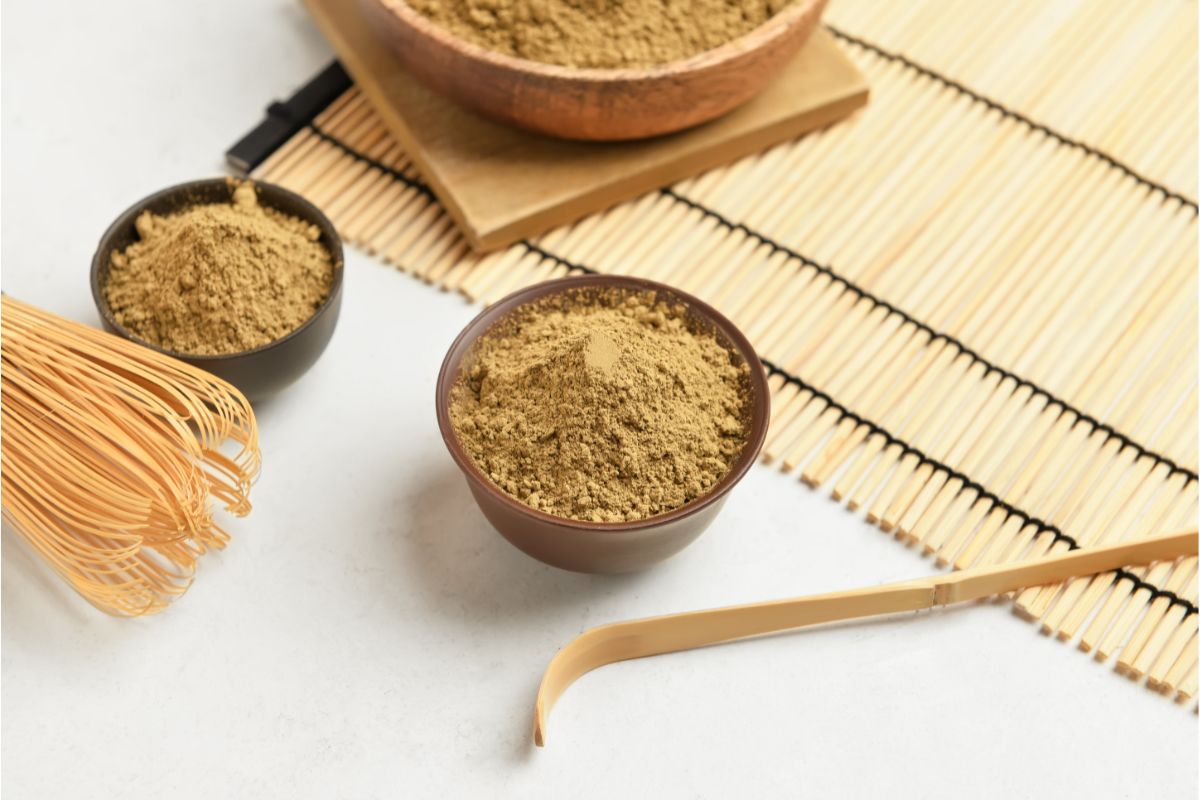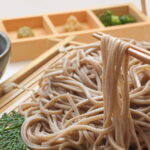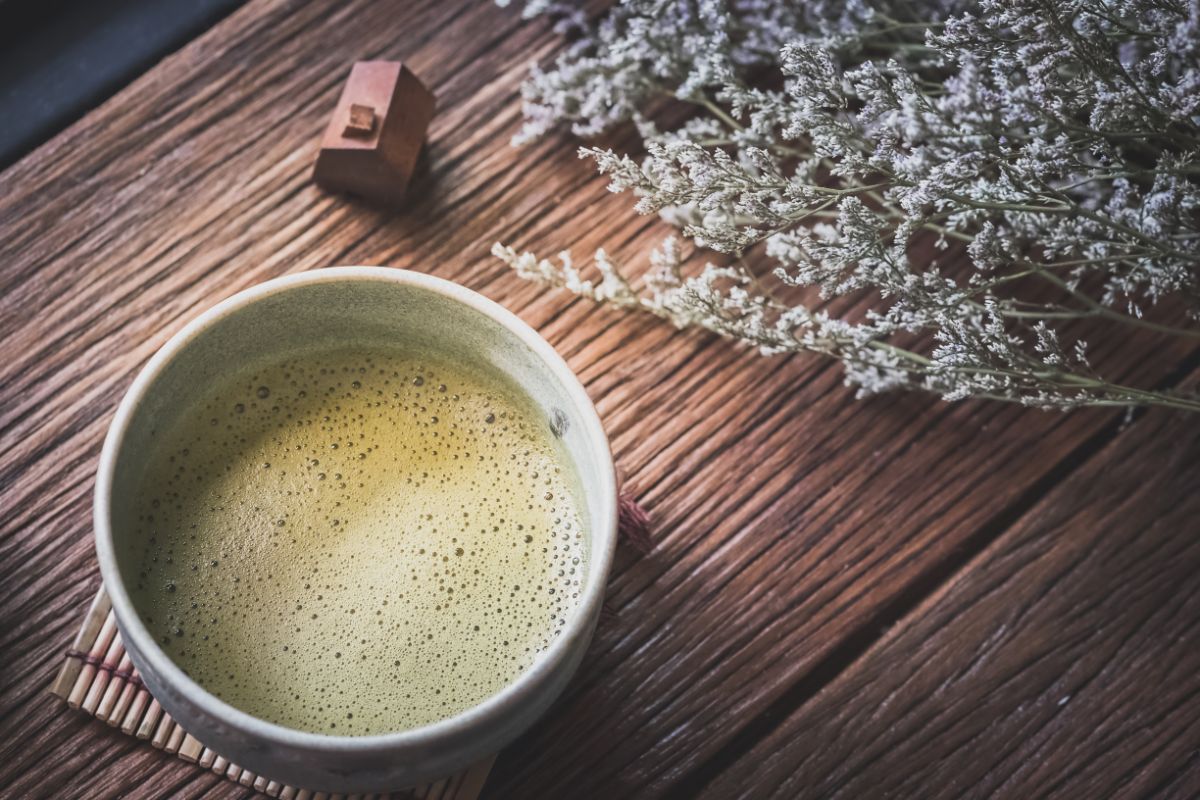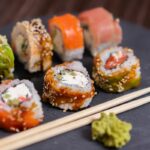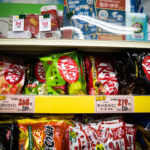Green tea is healthy and delicious, and the beverage has long been associated with Japan. It’s a staple beverage, served and enjoyed at restaurants across the country, and in the homes of millions of Japanese families. It’s delicious at any time of day—from a morning cup to stimulate your mind, to an evening tea to soothe your soul.
Did you know that Japanese green teas are unique from other green teas, including Chinese varieties? Today, they’re enjoyed and celebrated by people around the world. From how the tea leaves are prepared, to how the tea itself is brewed, there’s a world of flavor to experience in the different types of green tea that are popular in Japan.
While you’re bound to have green tea at some point on your travels to the country, it’s wise to know what types of tea are available to you. Read on for an introduction to the types of green tea popular in Japan.
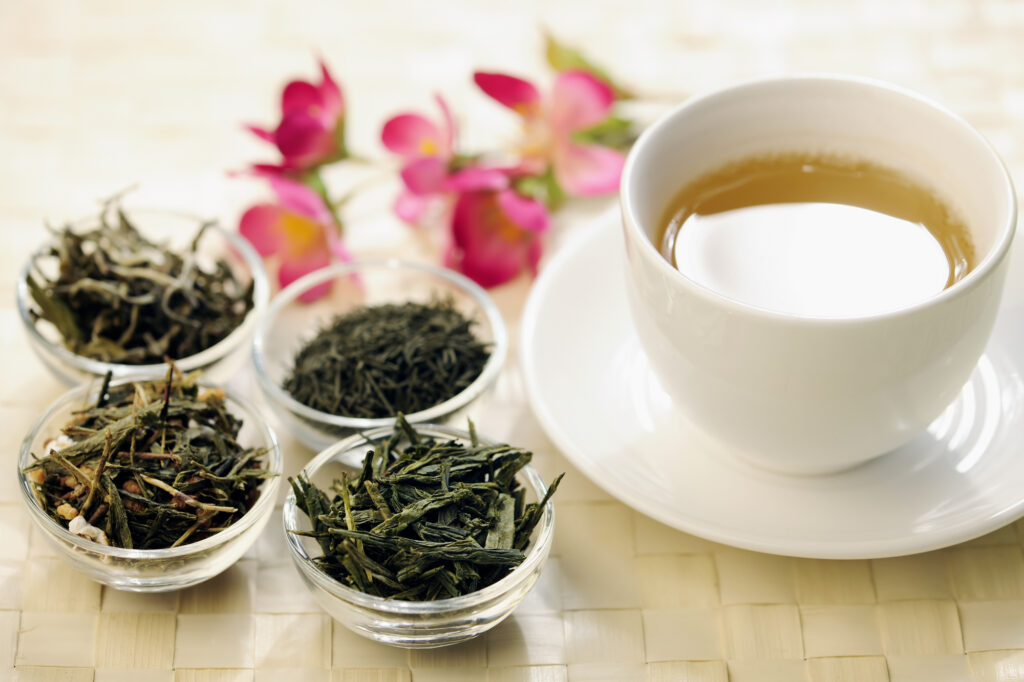
History of green tea in Japan
Arriving in Japan by way of China, green tea is synonymous with Japanese cuisine and culture. Japanese monks studying Buddhism in China returned to Japan during the Nara and Heian era, bringing green tea beverages with them. Since then, cultivation of tea leaves in Japan has proliferated and, throughout the years, become an art intrinsic to Japanese culture.
In the beginning, only royalty and elites consumed green tea. During the 12th Century, a priest named Myoan Eisai published a book dedicated to the preparation and consumption of green tea beverages. Its popularity spread from there, and today, the Japanese widely consume green tea. It even plays a central role in the Japanese tea ceremony—one of Japan’s most distinctive cultural practices.
Green tea is a daily part of life for many Japanese citizens and households. It’s common to enjoy green tea in the morning, where the rest of the world might indulge in coffee. Throughout the day, green tea can provide a subtle push of energy while calming the mind. And, in the evenings, many Japanese people drink tea to help them relax and unwind. It’s truly a versatile beverage.
Preparation: Asamushi vs. Fukamushi vs. Chumushi
Sencha is the most popular type of tea in Japan, characterized by a sweet flavor mixed, with mild astringency. It’s made either by a process of steaming or roasting, and the process used contributes to the tea’s flavor and aroma.
When it comes to steaming, tea producers each have their own individual approach. By steaming tea leaves to specific levels, they’ve developed three unique styles of sencha, each with their unique characteristics:
- Asamushi. A short steam of between 20 and 40 seconds creates asamushi-style sencha. The leaves remain whole, and the flavor is quite grassy thanks to the light, slightly tannic leaves.
- Fukamushi. Fukamushi-style sencha is produced by steaming the leaves between 80 and 200 seconds. As the leaves become softer, the flavor they produce becomes more intense and vibrant.
- Chumushi. Representing the middle-ground between asamushi and fukamushi, chumushi-style sencha is made from leaves steamed between 40 and 80 seconds. It’s the most “classic” sencha variety that you’ll find in supermarkets across Japan.
Across all three methods of preparation, the goal is to unlock the flavonoids contained within team leaves. These flavonoids—which include catechins—are what give the tea its flavor, aroma and, most important, its medicinal properties.
The health benefits of green tea
Green tea consumption has been widely linked to numerous positive health markers—not only for the Japanese people, but cultures across the world that incorporate tea drinking into their daily diet. There are numerous studies that specifically examine catechins and the anti-inflammatory properties they hold.
In addition to anti-inflammatory properties, green tea has been studied for numerous other benefits, including:
- Increased metabolism and fat-burning
- Reduced oxidation and cellular damage
- Improved cognition and brain function
- Enhanced energy and mental stimulation
There are even studies that measure the ability of green tea to fight cancerous cells or protect against cell mutation! Safe to say, green tea is well-researched with a variety of promising health benefits associated with regular consumption.
Most popular types of green tea in Japan
There are nearly 20 distinct types of Japanese teas. While the most common are sencha and fukamushicha—together accounting for nearly 75% of all tea produced in the country—there are tons of unique varieties to explore.
If you’re on a quest to try them all, you can try a Japanese market or explore different tea ceremonies while you’re traveling the country. Tea is grown throughout the entire country of Japan, with many prefectures offering their own distinctive local teas. Whether you want an astringent taste, or you’re craving something smoother and aromatic, the Japanese world of tea is full of a range of possibilities.
While you might already be familiar with some of the most popular styles, it’s worth getting to know some of the many types of green tea in Japan:
- Sencha. Featuring a flavorful blend of delicate sweetness with mild astringency, sencha is a traditional tea made from the first pickings of the tea bush. Looking to boost your immune system? This tea is high in Vitamin C and is especially popular with women as a teatime drink.
- Fukamushicha. Fukamushicha is made a lot like sencha, except the tea leaves are steamed for two to three times longer. The extra steam withers and darkens the leaves. While the taste stays sweet and moderate, the fragrance becomes richer and deeper. This tea is gentle on the stomach—enjoy as much as you want!
- Kukicha. This unique tea is made from the discarded stems of gyokuro, matcha and sencha plants, with “karigane”—made from gyokuro stalks—being the most prized. It features a clean taste and light fragrance, perfect for morning refreshment.
- Konacha. Konacha means “tea powder.” It’s the most common tea served at sushi restaurants across Japan, and you’ll see it on the menu as “agari.” It’s made from the rejected buds and tea dust produced in sencha and gyokuro processing. Don’t let that description taint your perception, though! If you’re looking for a tea with strong color, flavor and aroma, you’ll love konacha.
- Bancha. Bancha refers to tea leaves of later pickings, giving the drink more astringency. The glossy tea leaves give the beverage an unmistakable, refreshing fragrance. While it’s considered one of the lower grades of tea in Japan, many people have a fondness for it thanks to how easily it pairs with food.
- Matcha. This powdered tea is famous for its role in Japanese formal tea ceremonies. Top-quality matcha is distinguished by its bright shade of green, while lighter green variants are sweeter and less astringent. Aside from its role as a distinctive tea, matcha is a popular ingredient in many Japanese savory dishes and desserts, and it enjoys worldwide popularity today.
- Tencha. Tencha is the unpowdered form of matcha, and the process to make it is quite different. Unlike most green teas, the tea leaves of tencha are dried after steaming but aren’t rolled. The dried leaves are then ground to powder, producing a tea with a deep, mellow taste with an aroma that lingers pleasantly in the mouth. It’s perhaps the rarest type of tea on this list, and you might have difficulty finding it—even in Japan.
- Gyokuro. This top-grade tea features a rich green color and a sweet, mild flavor. It contains high levels of theanine, an amino acid that develops due to the unique way the Japanese process the tea bush. If you’re looking for a caffeine boost, gyokuro is a tasty option. It contains plenty of caffeine that stimulates the nervous system and the brain. It’s also filled with chlorophyll that enhances tissue growth, and many people even believe gyokuro is good for your skin!
- Hojicha. Produced by roasting sencha or bancha over high heat, hojicha is a savory tea. It contains low levels of both caffeine and tanning, making it a great drink for children or caffeine-sensitive people. Many Japanese people believe hojicha contains immune-boosting properties, and it’s widely used by people recovering from illnesses. In the summer, hojicha can be served cold—a tasty refreshment for the warmest months of the year.
- Genmaicha. This unique tea combines bancha or medium grade sencha with roasted and popped brown rice. Thanks to the rice, you’ll notice a nutty, mild flavor. Many Japanese enjoy genmaicha after a meal of oily or deep-fried foods. It’s a flavorful palate cleanser that soothes the stomach and may aid in digestion.
Japan is a tea-lover’s paradise
Japan is famous for its teas, and it’s easy to see why. There’s no shortage of unique, interesting styles—so whether you prefer the sweet flavor of matcha or something more astringent like sencha, there’s a green tea out there to please your palate. Best of all, most of these teas are readily available throughout the country, both prepared at restaurants and in dry leaf form at supermarkets.
The Japanese have enjoyed green tea daily for centuries. It’s your turn to explore the world of green tea today—whether at home or on a visit to Japan. Drink to your health!
- How Much Money Can You Make Teaching English in Japan? - December 12, 2022
- The Best Places to Teach English in Japan - December 9, 2022
- The Best Credentials for Teaching English in Japan - December 8, 2022

